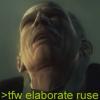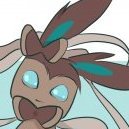Search the Community
Showing results for tags 'Off Topic'.
-
Hey all! I know this topic is completely off topic from anything Bionicle related. But seeing as I know a number of you I thought I'd post it here anyway. Over the past 2 months, in my spare time, I've been working on a way to use the Korean alphabet (Called Hangul) with english. Random, I know, but I'm a linguist - Sue me. How I made it Anyway, from the get go I knew that out of all of the non latin writing systems out there. Hangul would be one of the best to use, do to it's abundance of similar letters and consonants to what we have. Here are each of the seperate characters, with their latin (english) equivalents. 14 consonant letters: ㄱ (g), ㄴ (n), ㄷ (d), ㄹ (l/r), ㅁ (m), ㅂ (b), ㅅ (s), ㅇ (placeholder/ng), ㅈ (j), ㅊ (ch), ㅋ (k), ㅌ (t), ㅍ (p), ㅎ (h)6 vowel letters: ㅏ (a), ㅓ (eo), ㅗ (o), ㅜ (u), ㅡ (eu), ㅣ (i)5 double ("tense") consonants: ㄲ kk, ㄸ tt, ㅃ pp, ㅆ ss, ㅉ jj4 iotized vowels (with a y): ㅑ (ya), ㅕ (yeo), ㅛ (yo), ㅠ (yu)5 (iotized) diphthongs: ㅐ (ae), ㅒ (yae), ㅔ (e), ㅖ (ye), ㅢ (ui) After I had researched each letter and sound system and such. I had a decision to make, do I go for a transliterative system (Converting the words to their equivalent pronunciation in the other writing system), or going all out and creating a new writing system for writing specifically english. Here's an example of what I mean: Transliterated: My cake = 마이 캨 (Mai kaek) New system: 뮈 차커 (My cake) I decided, for sake of ease and adoption, that a new system would be best, so I started with that in mind. Early on, I made some basic changes based on how a korean computer input works. First off, I narrowed down the vowels from the "ao, ae, eo" system that korena regularly uses to the a system using their basic vowels. So, I ended up with these five characters for vowels: A = ㅏ E = ㅓ I = ㅣO = ㅗU = ㅜ Then, I took the 14 consonants mentioned above, and removed letters that aren't single in english (Such as ch), and made double letters (Like the L/R) into one letter. (In this case, an L) The ㅇ is used as a placeholder (I'll explain later) and the sound NG in korean, so I removed that for the time being. So, I ended up with these 13 letters: ㄱ (g), ㄴ (n), ㄷ (d), ㄹ (L - Formally L/R), ㅁ (m), ㅂ (b), ㅅ (s), ㅈ (j), ㅊ (C - Formally CH), ㅋ (k), ㅌ (t), ㅍ (p), ㅎ (h) Now we're getting somewhere, we have 13 consonants and 5 vowels (18 letters all together). Awesome! But we're still missing 8 letters. The first letter I added was W. I used the Korean letter for Wa - 와 (Literally, Oa. (Say it out-loud, then you'll understand what that's used)) for the letter W. Good! Now I had 19 done. The letters I didn't have were: F Q R V X Z and Y After numerous hours going over multiple substitutions and alternative systems. I finally settled upon using the double consonants (mentioned at the top of this post) as the letters F, Q, R, V and Z like so: F = ㅉQ = ㄸR = ㄲV = ㅃZ = ㅆ Ok, 24 done. two left. For X, I brought the NG letter out of the metaphorical trash bin and used that. Now, there's something I should mention before I continue. In Hangul, the writing structure works like this: (C = Consonant, V = Vowel) C V C Example: 맡 M A T Each character is a Consonant, then a vowel beside it, and then a consonant underneath it. Now, if a word starts with a vowel, or has a vowel with no consonant preceding it, we use a placeholder. (The ㅇ character. Also NG in Korean, and X in my English system) In a case like this, we'd structure it like this: (P = Placeholder) P V C Example: 앝 * A T You may be saying "That's all fine Akiba, but what do I do if I have a word that has two vowels?" Well curious user, this is what we do: We simply remove the consonant from the bottom of the character, and start a new character. Like so: (Using the word heat as an example) HE * A T ( 허앝 ) OK, now that we have sorted out. We just have to finish out the last letter: Y. Korean has support for Y being the second letter in a word (Like: Hyuna, Kyun, etc.), but nothing that allows for a Y on it's own. (Like starting the word "Yes", or ending the word "Many") Most online translators usually translate the letter Y to the korean character for Ui, or 위, so I settled on that. There we go! Now we have all the letters we need. Now, how do we use this? How to use Hangul-English Using Hangul-English is quite simple! First, I should specify some basic korean writing rules. 1. If a vowel starts a word, or has no consonant preceding it, put the placeholder character ㅇ in front of it. 2. If you need to put two vowels, or two consonants in a row. Put the first letter down and then start a new character -- Vowels: Eg. Meet: 머엍 (Notice the placeholder at the begining of the second character? That's there because there is no consonant before the E in the character) -- Consonants: Butt: 붙트 (Notice the line underneath the T in the last character? That's there to specify that there aren't any other letters in the character.) 3. For numerous technical and linguistic issues in the Korean language, you can not end a character with letters ㅉ, ㄸ orㅃ (In Hangul-English, these are F, Q and V respectively), and you must start a new character instead. ( Eg. Gav = 가쁘 ) 4. (This only applies to Hangul-English, this doesn't happen in normal Korean) You can never start a character with the letter ㅇ (X), This is because it is used as both a placeholder and the letter X. If you want to start a word with the letter X, it must be it's own character, to let the reader know it's not a placeholder. Like so: Xeno = 으어노. Note: a character can still end with a ㅇ, because a placeholder is never used at the end of a character. 5. Because the letters w ( ㅘ ) and y ( ㅟ ) are built using two vowel letters, they act like vowels in the character structure. So the word Swan is written like 솨안 . Also, because they are treated like vowels, if you start a word with one of them, you must add the placeholder at the begining, like so: What = 와핱 6. In the case that there are 3 consonants in a row, you can occasionally stack consonants on top of each other without having a vowel. like so: 븠프 (BZP) (Note: You must add a line in between the two constants, like you did when there was a single consonant. Eg. 브) 7. If the third letter in a character is a consonant, and the next letter (The first of the next character) is a vowel, move the consonant from the first character to the second, so you don't have to use a placeholder. Like so: Instead of 탗오 (TAC - Placeholder+O), make it 타초 (TA - CO) With these rules in mind, here are the letters of the Hangul-English alphabet. A = ㅏ B = ㅂ C = ㅊ D = ㄷ E = ㅓ F = ㅉ G = ㄱ H = ㅎ I = ㅣ J = ㅈ K = ㅋ L = ㄹ M = ㅁ N = ㄴ O = ㅗ P = ㅍ Q = ㄸ R = ㄲ S = ㅅ T = ㅌ U = ㅜ V = ㅃ W = ㅘ X = ㅇ Y = ㅟ Z = ㅆ Yay! We've learned how to write Hangul-English! Here's some example sentences: My name is Akiba = 뮈 나머 잇 아키바 This site is known as BZP = 트힛 와업시터 잇 크노완 앗 븠프 Two matoran walk into a bar = 톼오 마토깐 왈크 인토 아 밖 If you have any questions, feel free to ask me! -TheAkihabara "Akiba"
-
Like the title says is anyone here a fan of JoJo's Bizarre Adventure?
-
Approved by Windrider. Game works like this: Post 1: something something blah blah blah. Post 2: Fortunately, something something blah blah blah. Post 3: Unfortunately, something something blah blah blah. Bzpower rules apply. Take advantage of the fact you're in COT. I'll start: You are a Toa.
- 107 replies
-
- 1
-

-
Just a topic for my drawings and such that are not Bionicle or Lego related.I'll probably be updating this topic, so if you like what you see, feel free to check back from time to time. ^^ Newest Drawing: Pokemon:Sunset: A Dragon's GraceI am very happy with the way this turned out. I recently decided to move in a different direction with my style and coloring. This was a test drawing to see how the system would work. Why Didn't I Evolve Into You?This one was my first test drawing for my new style as mentioned above. It was just a quick sketch, but people seem to like this one. ^^' Legend of Zelda:In the Hands of a GiantThis drawing actually inspired one of my OCs - a healing fairy named Cecilia from the Zelda franchise. Defending KakarikoMy original character, Eve. Not too happy with the colors in this one, but I generally like her pose and Mt Doom in the background. Pokemon and Legend of Zelda belong to Nintendo, Tangled belongs to Disney. Hope you like them. ^^



